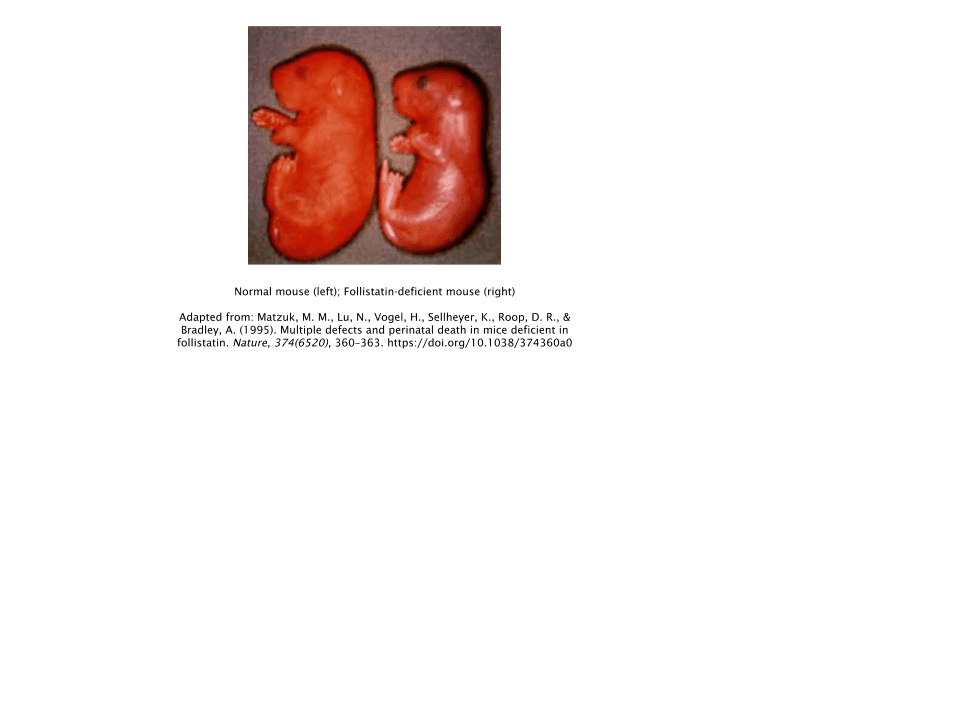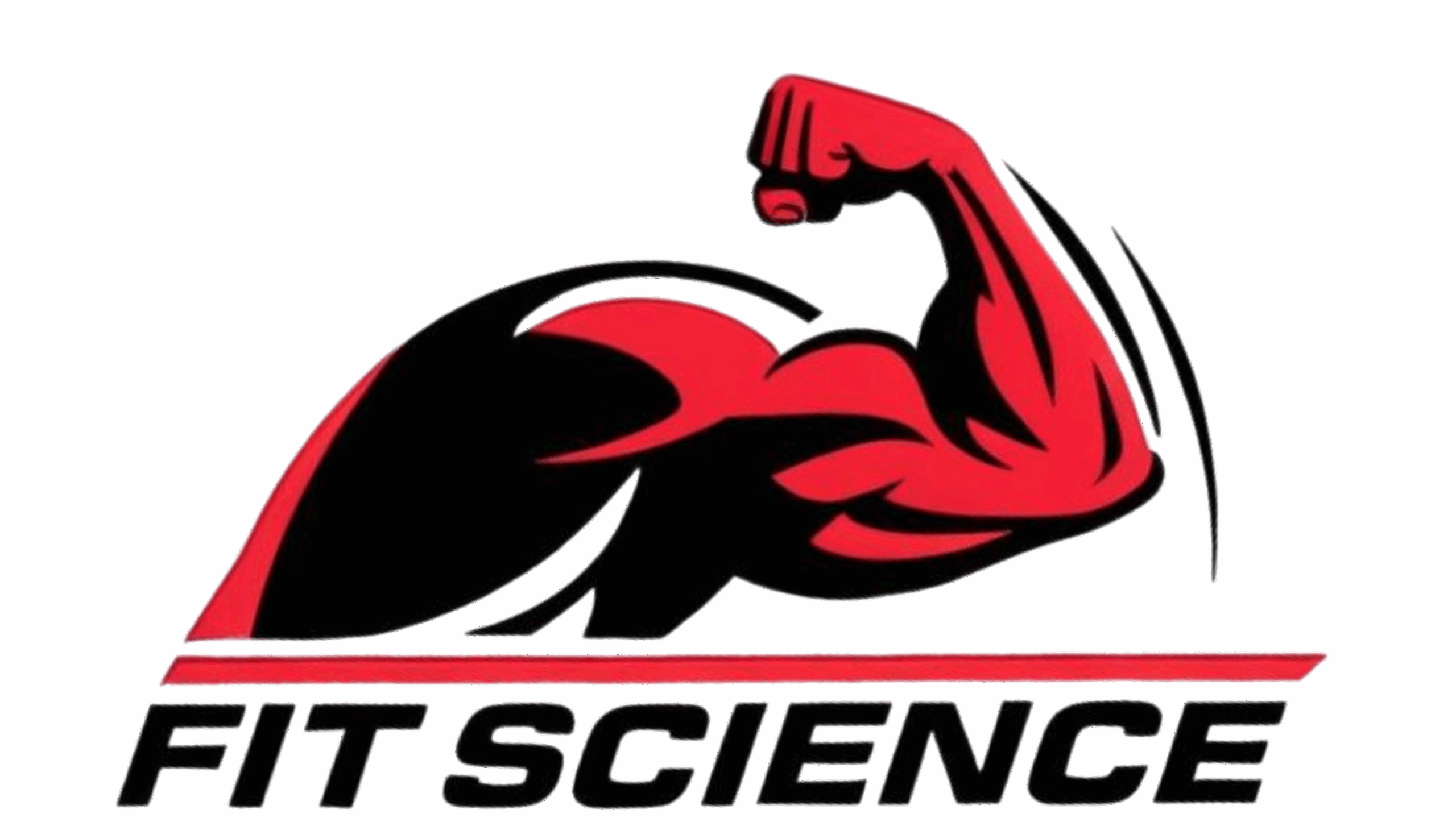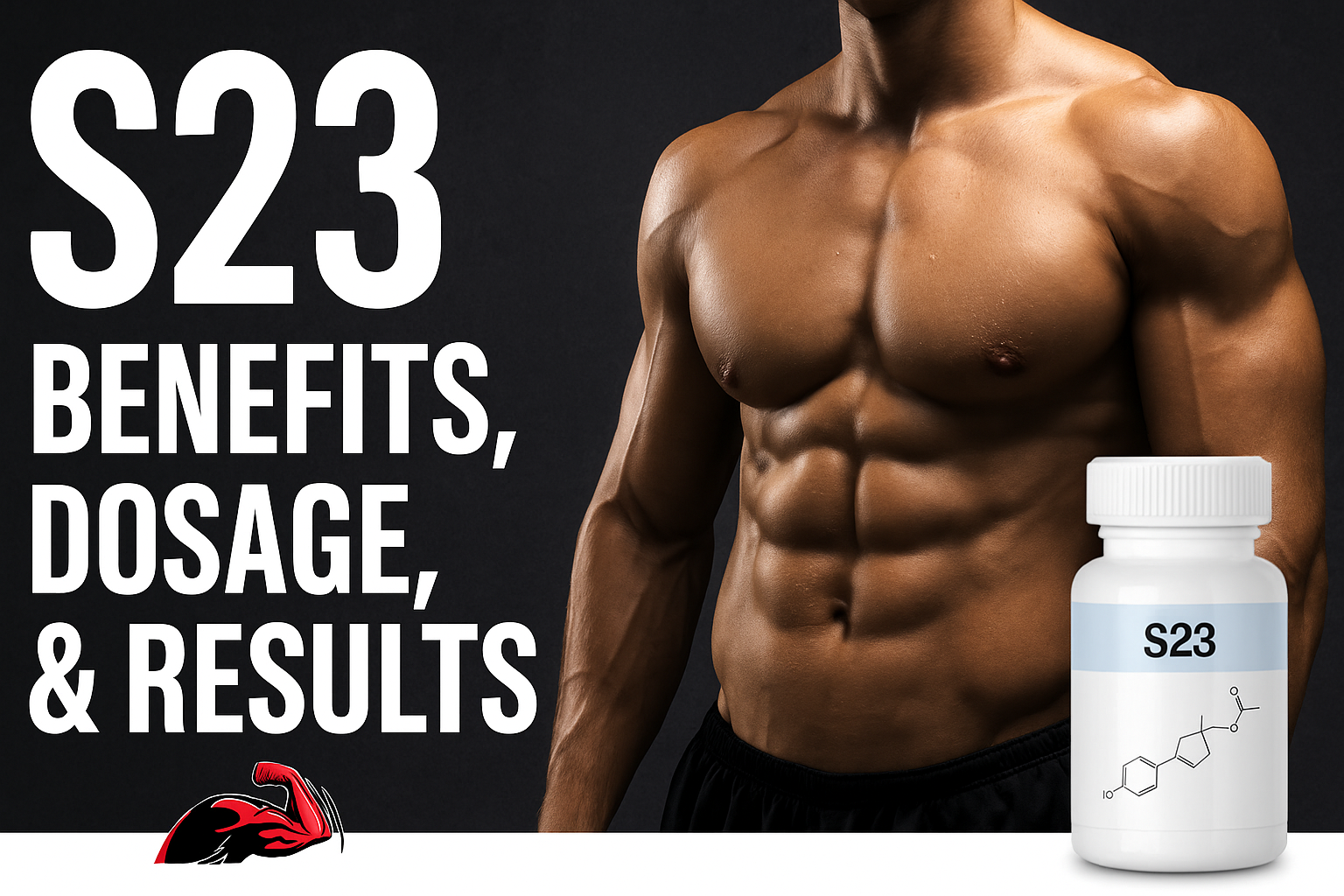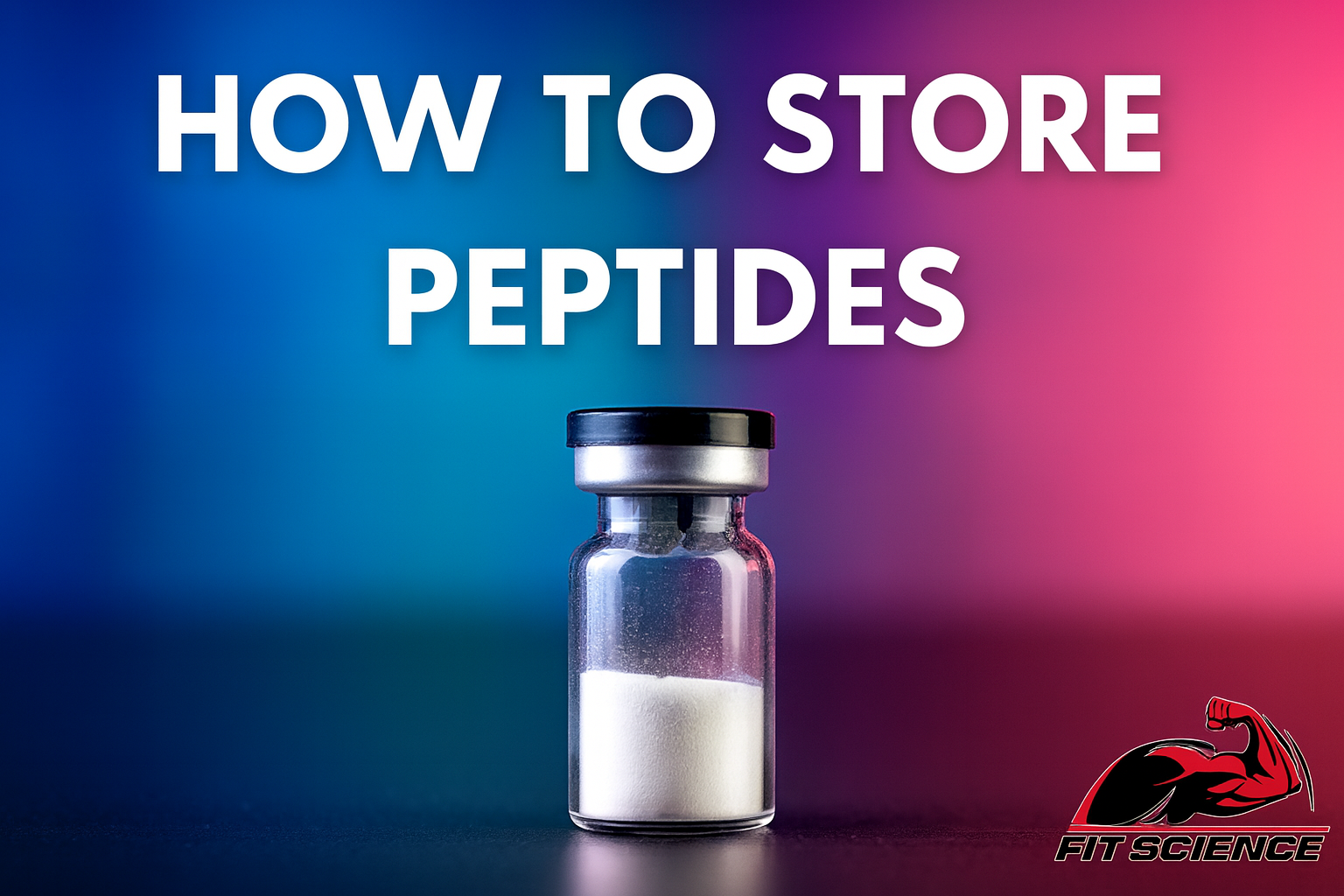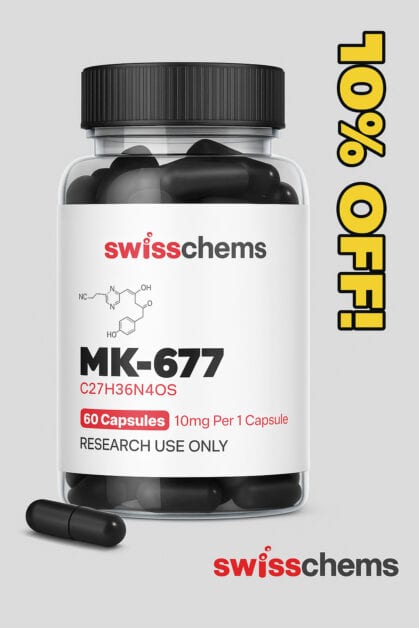What Is YK-11?
YK-11 is a synthetic, steroid-based selective androgen receptor modulator (SARM) derived from dihydrotestosterone (DHT)—but it doesn’t act like typical non-steroidal SARMs. Its structure and in-vitro behavior classify it as both a partial androgen receptor agonist and a potent myostatin inhibitor via follistatin induction.
- Chemically: (17α20E)-17,20-[(1-methoxyethylidene)bis(oxy)]-3-oxo-19-norpregna-4,20-diene-21-carboxylic acid methyl ester
How Does YK-11 Work?
1. Partial Androgen Receptor (AR) Agonism
YK-11 binds the androgen receptor, activating it partially—not to the full extent as testosterone or D
HT. This means it triggers muscle-building pathways (e.g., IGF-1, satellite cells) while minimizing androgenic effects in tissues like prostate, skin, or hair follicles. Unlike classical steroids, YK-11 does not prompt the H-terminal/C-terminal interaction necessary for maximum transcriptional activation.
2. Induction of Follistatin → Myostatin Inhibition
YK-11 strongly stimulates follistatin expression, which suppresses myostatin, a protein that limits muscle growth. This combined AR + myostatin-inhibition effect is thought to drive its unusually anabolic potency compared to other SARMs.
3. In Vitro / Animal Studies
In C2C12 myoblasts and human muscle precursor cells, YK-11 promoted faster differentiation
and higher muscle protein synthesis than DHT. Animal studies (e.g. sepsis-induced muscle atrophy models) showed YK-11 prevented muscle wasting and reduced inflammatory cytokine expression.
YK-11 Half Life & Pharmacokinetics
| Source | Estimated Half-Life | Dosing Implications |
|---|---|---|
| Trusted SARMs | ≈12 hours | Split dose twice daily |
| User Reports | 6–10 hours | Twice-daily to maintain steady blood levels |
Due to limited human data, most recommendations rely on anecdotal experience and preclinical estimates. Practical dosage strategy: split total daily dose into morning + evening to maintain stable plasma concentration.
YK-11 Dosage & Cycle Guidelines
| Dosage Range | Frequency | Typical Cycle Length | Notes & Risks |
| 5 mg per day | 2.5 mg + 2.5 mg | 4–6 weeks | Conservative, minimal suppression |
| 10 mg per day | 5 mg twice daily | 4–8 weeks | Common for intermediate users |
| ≥15 mg per day | Split dose | 4–8 weeks | Higher risk of side effects, not recommended |
Most experienced users recommend 5 mg/day as upper safe threshold for new cycles. Post-cycle therapy (PCT) with Nolvadex or Clomid is often advised due to possible testosterone suppression even at moderate doses. YK-11 is frequently stacked with RAD-140, LGD-4033 or Andarine—but keep YK-11 at or below 5 mg/day to limit toxicity.
Typical Results from YK-11
Expected outcomes (bodybuilding context):
- Lean muscle gain: users report up to 5–10 lb of lean mass in 4–8 weeks (anecdotal).
- Strength increases: improved lifts, accelerated recovery.
- Reduced body fat: especially when combined with high-protein, caloric-surplus nutrition plan.
- Visual conditioning: enhanced muscle fullness and vascularity from increased follistatin-mediated myostatin suppression.
Safety, Side Effects & Unknown Risks
While most dose-based side effects are mild or dose-related, note:
- Limited human clinical data: YK-11 is listed as experimental; only cell and animal studies exist.
- Reported risks include:
- Testosterone suppression (mild to moderate).
- Liver enzyme elevations and potential hepatotoxicity.
- Unknown long-term effects on cardiovascular, endocrine or reproductive systems.
- Hair loss, acne or mood swings may appear at high dose or low purity uses—especially from contaminated black-market products.
- Legal status: banned by WADA in professional sports, sold online only as “research chemical.”
Stacking Synergies & Sample Stacks
YK-11 can be stacked strategically with other SARMs or peptides to maximize specific goals. Below are a few examples:
Bulking Stack (Lean Mass Focus)
- YK-11: 5–10 mg/day
- RAD-140: 10 mg/day
- MK-677: 20 mg/day (for GH synergy)
- Cycle Length: 6–8 weeks
- PCT: Required
Recomp Stack (Build Muscle, Lose Fat)
- YK-11: 5 mg/day
- LGD-4033: 5 mg/day
- Cardarine: 10–20 mg/day
- Cycle Length: 6 weeks
Strength Stack
- YK-11: 10 mg/day
- S4 (Andarine): 25 mg/day split
- RAD-150: 10 mg/day
Always ensure full PCT and bloodwork pre/post when stacking.
YK-11 vs Steroids & Other SARMs
| Compound | Suppression | Muscle Gain | Water Retention | Myostatin Inhibition | Hair Loss Risk |
| YK-11 | Moderate | High | Minimal | Yes (via Follistatin) | Medium |
| Testosterone | High | High | Moderate | No | High |
| LGD-4033 | Low-Mod | Medium | Low | No | Low |
| RAD-140 | Moderate | High | Low | No | Medium |
YK-11 stands out for lean gains, low water retention, and myostatin inhibition. However, it lacks the data and medical legitimacy of compounds like testosterone.
Real-World Feedback & Before/After Reports
Users across forums like Reddit and professional bodybuilding communities report:
- Noticeable changes in muscle hardness within 10–14 days
- Pumps similar to those on DHT-based steroids
- Moderate suppression—worse than Ostarine, less than real AAS
- Liver values elevated when taken over 15 mg/day or over 8 weeks
- Some users experience mood swings or irritability
Lab Testing, Blood Markers & What to Monitor
Before starting YK-11:
- Total Testosterone
- SHBG
- LH/FSH
- Liver enzymes (ALT, AST)
- Lipid profile
Post-cycle:
- Same markers plus CBC and estrogen (E2)
Add liver support (e.g., NAC or TUDCA) and consider bloodwork mid-cycle if using YK-11 with another compound.
YK-11 for Women – Dosage & Risks
YK-11 is not typically recommended for female users due to:
- High androgenic potency
- Lack of human trials
- Potential for deepening voice, acne, and virilization
If used:
- Dose: No more than 1–2 mg/day
- Cycle Length: 4 weeks max
- Monitor: Hair shedding, mood, libido, and menstruation
Always start conservatively, and women should avoid stacking YK-11 with other androgens.
Cutting vs Bulking Applications
Bulking:
- Use with RAD-140 or MK-677 for synergistic anabolic environment
- Higher caloric intake recommended (250–500 surplus)
Cutting:
- Pair with Cardarine or S4 for fat oxidation and strength retention
- Moderate carb deficit; add NAC for liver health
YK-11 adapts well to both phases but should be dosed lower during cuts to reduce strain on liver and avoid suppression-induced fatigue.
Detailed Technical Mechanisms – Deep Dive
Molecular Activity
YK-11 binds to AR with high affinity but minimal N/C terminal folding, leading to partial activation of androgen-responsive gene transcription. Simultaneously, YK-11 activates the gene for follistatin, which, when secreted, blocks myostatin and activin signaling via binding to ActRIIB receptors. This double action promotes Muscle Protein Synthesis (MPS) while limiting catabolic signals from myostatin.
Cell Signaling Pathway Diagram
[YK-11] → [Androgen Receptor] → Partial AR signal → ↑ IGF-1, satellite cell activation
→ ↑ Follistatin → ↓ Myostatin signaling → ↑ MPS
Combined, these activate mTOR and Akt pathways in skeletal muscle.
Metabolism & Clearance
Animal metabolite mapping (with deuterated YK11) found substantial biotransformation via D-ring orthoester cleavage and sulfonation pathways. Likely processed via liver Phase I (oxidation, hydrolysis) and Phase II (glucuronidation/sulfation).
Potential Immunomodulatory Effects
In sepsis-induced atrophy models, YK-11 also lowered IL-6, TNF-α in muscle tissue, indicating anti-inflammatory activity beyond anabolic action.
User Protocol Example
- Cycle Duration: 6 weeks
- Total Daily Dose: 10 mg (5 mg morning, 5 mg evening)
- Week 1–6: split dose with meals, maintain hydration
- Training: moderate volume strength + hypertrophy split
- Nutrition: 1.6–2.2 g protein/kg body weight + caloric surplus
- PCT: start 2 weeks post-cycle with Clomid 50 mg/day × 3 weeks or Nolvadex 20 mg/day × 3 weeks
- Liver support: NAC or TUDCA throughout cycle
- Lab tests: baseline and post-cycle testosterone, liver enzymes, lipids
YK11 Quick Answers
- What is YK11? A synthetic steroidal SARM with unique dual action: partial androgen receptor activation + myostatin inhibition via increased follistatin.
- How does YK11 work? Binds and partially activates the AR and boosts follistatin expression to suppress myostatin, enhancing lean mass gains.
- YK11 half life? ~6–12 hours. Best taken twice per day in a split dosage protocol.
- YK11 dosage recommendations? 5–10 mg per day total, split into two doses; typical cycle length 4–8 weeks. PCT recommended after.
- What results can YK11 deliver? Muscle gain, strength improvements, improved recovery, and enhanced conditioning.
Latest Research (2025 Update)
- Human clinical trials? None published to date as of June 28, 2025. All studies still preclinical.
- Comparison to newer SARMs: YK11 remains one of the few that also modulates myostatin. Others like ACP-105, RAD-150, SR-9009, MK-677 do not.
- Market trends: despite bans, YK11 remains popular in underground bodybuilding communities.
Comparison Table vs Other Popular SARMs
| Compound | Steroidal? | Myostatin Inhibition | Half-Life | Common Dose | Clinical Data |
| YK-11 | Yes | ✅ via follistatin | 6–12 h | 5–10 mg/day | Cell/animal only |
| RAD-140 | No | ❌ | ~16 h | 10–20 mg/day | Limited trials |
| LGD-4033 | No | ❌ | 24–36 h | 1–5 mg/day | Phase 1–2 |
| Ostarine | No | ❌ | ~12–16 h | 10–30 mg/day | Phase 2 trials |
| ACP-105 | No | ❌ | ~10–12 h | ~5 mg/day | Preclinical only |
| MK-677 (IBU) | N/A | ❌ | ~24 h | 10–25 mg/day | Some human data |
Summary & Final Best Practices
- YK-11 is not a steroid, though it has a steroidal backbone. Its partial AR agonism plus powerful myostatin inhibition makes it unique and more potent than most non-steroidal SARMs.
- Despite anecdotal popularity, YK-11 remains experimental, with no approved medical use and unknown long-term safety.
- If used, follow a conservative protocol: low dose, short cycle, full PCT, and blood tests.
- Emphasize reading purity certificates, sourcing from reputable labs, and considering legal risks.
References
- Wikipedia: YK-11
- FitScience.co: SARMs Overview 2025, YK-11 Guide
- TrustedSARMs.ca: YK-11 Dosage, YK-11 Half-Life
- ScienceDirect: Myostatin inhibition study on YK-11
- SARMGuide.com: YK-11 Review
- CrazyBulk.ca: YK-11 Blog Article
- GlobeNewswire: SARMs Market Report 2025
- PubMed: YK-11 metabolism (deuterated compound)
- BrutalForce.com: YK-11 Safety & Protocol Article
- Reddit: r/SARMscience and r/bodybuilding YK-11 threads
But YK11 acts as a partial agonist of the androgen receptor (AR), which is why it’s also considered to be a SARM [1]. How exactly does this make it a SARM?
It first helps to understand what exactly an AR agonist is in the first place. Androgens act as primary activators (agonists) of the AR; the most prominent of which are testosterone and its potent derivative dihydrotestosterone (DHT). When these androgens bind to the AR, it exerts a multitude of effects; many of which are important for male development. This includes the synthesis of sperm (spermatogenesis) and the growth/maintenance of skeletal muscle tissue [2].
Circling back to YK11’s role as a partial agonist, the “partial” aspect of its agonistic role speaks to its ability to bind selectively to the AR, hence the “selective” part of selective androgen receptor modulator. This is of course relative to the agonist DHT, which is often to blame for androgens’ undesirable effects/outcomes such as male-pattern baldness, acne, and even prostate cancer [3]. This explains the motivation behind why researchers are interested in examining YK11’s potential use as a safer alternative to androgen therapy. But while research has suggested that YK11 has a modest ability to selectively activate the AR, it still does not match the selectivity of other SARMs.
The lack of regulation and overall “looseness” of the term “SARM” may be to blame here, as there is no minimum amount of selectivity, per se, definitively separating a SARM from an AAS. Hopefully as more research is conducted, this blurred line becomes clearer.
YK11 is a Potent Myostatin Inhibitor
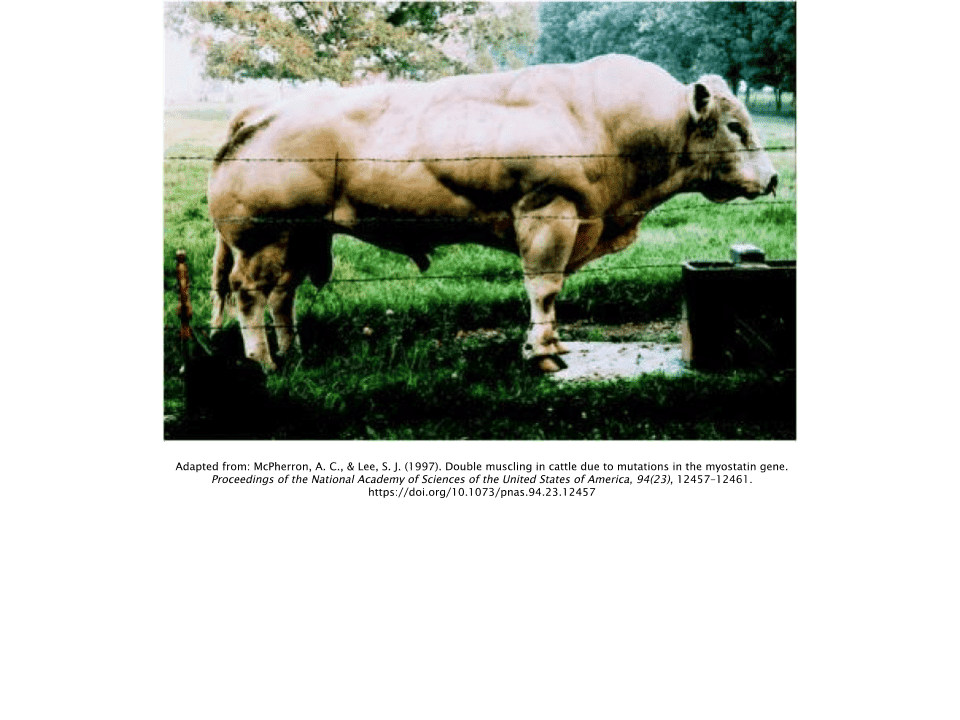

The same group of researchers had also examined this phenomenon in the Belgain Blue bull, which has a mutation in the myostatin gene that causes both greater levels of muscle accretion as well as decreased levels of adipose (fat) deposition, which results in this cattle producing very lean cuts of meat [6]. At birth, a Belgain Blue calf is approximately twice the weight of a normal calf [7].
Follistatin
Follistatin can be thought of as the polar opposite of myostatin; acting as its primary antagonist and inhibiting its muscle-limiting actions throughout the body. Theoretically, increased amounts of follistatin equals less circulating levels of myostatin. Thus, leading to increased rates of muscle growth.
This theory tends to be supported, with a study conducted in follistatin knockout mice (mice that lacked the follistatin gene) showing reduced amounts of muscle mass at birth, with the lack of follistatin inevitably leading to the overactive expression of myostatin [8].
